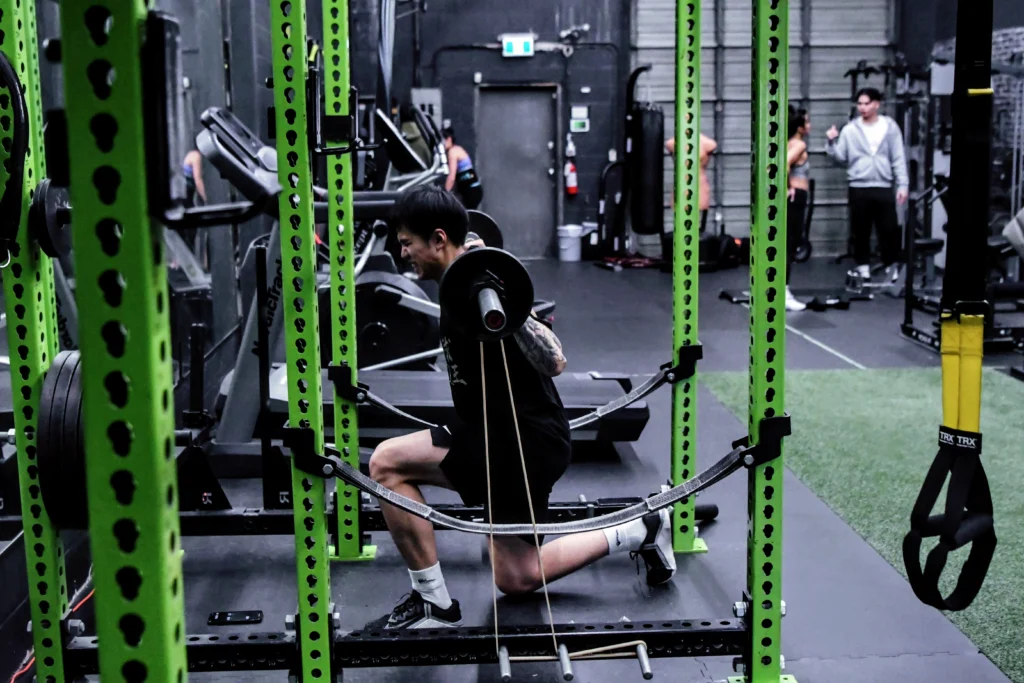As a seasoned personal trainer, I’ve helped countless clients reach their fitness and wellness goals. I get questions a lot about Biomechanics of training so I thought I’d write a blog post so it’s open for everyone to learn, understand and grow.
So today, I want to delve into a crucial yet often overlooked aspect of training: biomechanics. Understanding biomechanics can elevate your training regime, ensuring you maximize performance while minimizing injury risk. Let me breakdown this fascinating subject.
Five important components in biomechanics are motion, force, momentum, levers and balance: Motion is the movement of the body or an object through space. Speed and acceleration are important parts of motion. Force is a push or pull that causes a person or object to speed up, slow down, stop or change direction.
What is Biomechanics?
Simply put, biomechanics is the study of movement and the forces that act upon the human body. It encompasses everything from how muscles produce force to how bones and joints interact during movement. By analyzing these factors, we can optimize our training techniques for better results and safer workouts.
Why is Biomechanics Important in Training?
- Injury Prevention: Proper biomechanics help identify and correct improper movement patterns that can lead to injuries. For instance, understanding the correct way to squat can prevent knee and lower back problems.
- Performance Enhancement: By improving biomechanics, you can make your movements more efficient. This leads to better performance whether you’re lifting weights, running, or participating in athletic events.
- Longevity: Training with good biomechanics prolongs your athletic life. It reduces the wear and tear on your body, ensuring that you can keep training for years to come.
Key Biomechanical Principles in Training
1. Joint Alignment
Ensuring proper joint alignment is crucial for effective movement. Misalignment can lead to excessive stress on ligaments, tendons, and muscles, which can cause injuries.
Tips:
- Keep knees aligned with your toes during squats.
- Maintain a neutral spine during deadlifts and rows.
2. Force Production and Absorption
Understanding how your body produces and absorbs force can improve training outcomes. Efficient force production means you can lift more weight, run faster, and jump higher.
Tips:
- Use the stretch-shortening cycle to your advantage. For example, a quick downward movement before a vertical jump stores elastic energy in the muscles, allowing for a more powerful jump.
- Focus on controlled landings to absorb force and reduce impact on your joints.
3. Muscle Function
Muscles work in pairs: agonists and antagonists. Agonists are the primary movers, while antagonists act to stabilize the joint. Balance between these muscle groups is essential for optimal performance and injury prevention.
Tips:
- Incorporate exercises that target both agonist and antagonist muscles. For example, pair bicep curls with tricep extensions.
- Ensure you train all the major muscle groups to avoid imbalances.
Applying Biomechanics to Your Training
Technical Lifts
For exercises like squats, deadlifts, and bench presses, focus on maintaining proper form. Incorrect form not only reduces the effectiveness of the exercise but also increases the risk of injury.
Example: Squat
- Keep your feet shoulder-width apart.
- Engage your core.
- Lower your body by bending at the hips and knees.
- Ensure your knees track over your toes.
- Drive through your heels to return to the starting position.
Cardiovascular Training
For running or cycling, biomechanics can help you improve efficiency and reduce the risk of overuse injuries.
Tips:
- Maintain a midfoot strike when running to reduce impact forces.
- Keep your body upright, and avoid excessive forward lean.
Plyometric exercises – such as box jumping, burpees, and jumping squats – are also considered biomechanical exercises. These types of exercises require very specific movements to be done in a controlled manner that helps to increase power, stability, and performance.
Mastering the biomechanics of training can significantly improve your performance and reduce the risk of injury. As your personal trainer, I am here to guide you through this journey. Whether your goal is fitness, wellness, or athletic excellence, understanding and applying biomechanical principles will help you achieve your goals more efficiently and safely.
Ready to take your training to the next level? Contact me today and let’s get started on a path to optimal performance and well-being.




